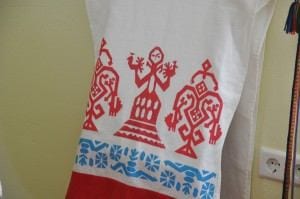Travel News
The Old Believers of Lake Peipsi: Uncovering the Secretive Culture
Traditional Beliefs
In a parlor room filled with traditional costumes and dominated by a huge samovar, a Russian-style urn used for making tea, Anna said that according to traditional beliefs each house has a “clean” and “dirty” side.
The front rooms, used for special purposes such as prayer and hosting visitors, were considered the “clean” side. On this side of each home is an icon station, always located in the east corner of a front room, facing Jerusalem and the rising sun. Prayers were said here every morning and evening and before and after meals.
The other side of the house where the everyday “blood, sweat and tears” business of life took place–such as the kitchen and the bedrooms–was considered the “dirty” side.
Symbolic Customs
 The Old Believer heritage includes a rich tradition of symbolism in all aspects of day to day life. Clothes had symbolic meaning. Anna told me that her grandmother wore a special belt all the time as a form of protection against devil, only taking it off in the sauna.
The Old Believer heritage includes a rich tradition of symbolism in all aspects of day to day life. Clothes had symbolic meaning. Anna told me that her grandmother wore a special belt all the time as a form of protection against devil, only taking it off in the sauna.
Down the road at the Peipsi Visitors Center, Leelo Eha explained that symbolism is very significant to Old Believers. A star pattern means good luck. The rooster is another much-used symbol–when embroidered on the end of a sleeve or collar so that the tails meet, it means that the person has survived great difficulties.
“People used to be able to tell someone’s whole life story by the patterns woven into their shirt, but now much of the meaning of the symbols has been lost,” she said. “When people do not have time to devote to it, or the handiwork is not valued, the patterns, symbols, and meanings disappear. The new era of mass media has had a devastating influence on this kind of activity.”












